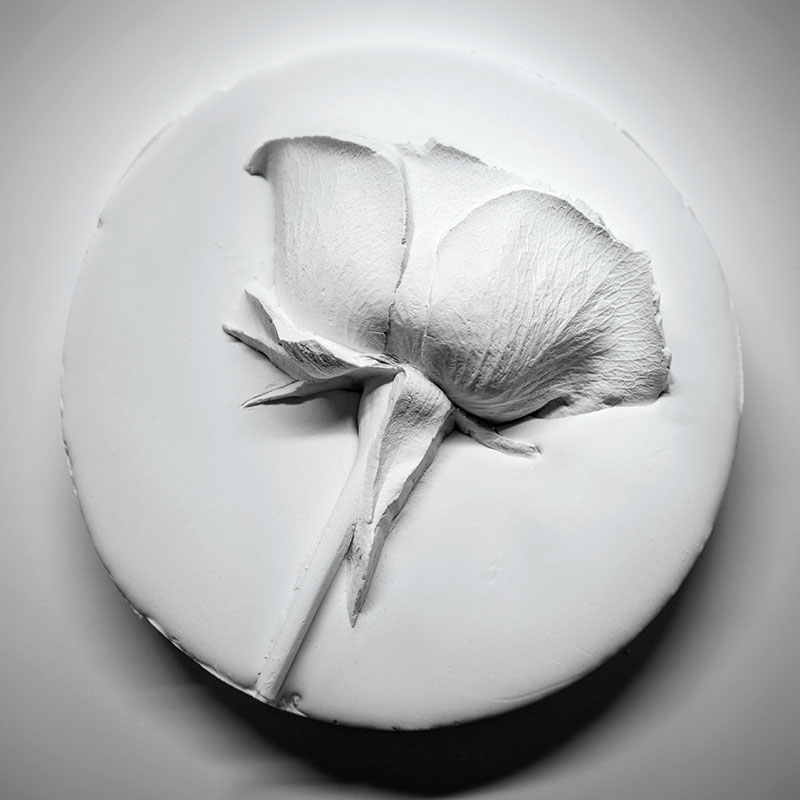It is the spirit of the engraving department to discuss designs as a team, exchange ideas freely and to work together towards a common goal. This harmonious interaction is an essential ingredient in their success. The team works with great attention to detail and perfection. Their experience and a great deal of heart and soul are reflected in their coins. The quartet of engravers is part of a long and honourable tradition to which they are fully committed. Always in the spotlight for the artistic quality of their work, they regularly represent their colleagues in the production, toolmaking and marketing departments when winning international awards.
How is the launch of a new coin or coin series typically planned and coordinated?
Rebecca Wilding: When it comes to new coins or series, the marketing department approaches us with an idea or a motif. In this phase we work closely together and there is continuous coordination between engraving and marketing. Once the board has chosen the final design, we start implementing it on a model. From that point on, if not earlier, we work closely with the toolmaking department.

What would you define as important characteristics for cooperation in your team, as well as with the other departments?
Rebecca Wilding: It is important that people get along well with each other. This also applies to cooperation between the departments. In meetings, everyone has the opportunity to express their opinion and it is respected and taken seriously by the others. Everyone has the chance to actively contribute and present their ideas.
Helmut Andexlinger: I think a lot depends on the fact that when we transform an idea into a product, we think about the technical requirements and challenges at the same time. The complexity of the projects means that we have to keep an eye on their technical feasibility as mediators between the idea and the implementation.
The toolmaking team are happy that the cooperation with your department works so well and that they can contribute. A sense of community can be felt here and everyone is on the same page.
Helmut Andexlinger: We feel exactly the same about them. We need toolmakers with the will to implement new ideas because we have to dare to break new ground. There is generally a willingness in the company to try out new things.
Kathrin Kuntner: That was also the basic premise for The Language of Flowers series. At first, the idea of printing the flowers was just a crazy idea but then we got together and thought about how to implement it. That's how we finally found a solution.
Anna Rastl: The toolmaking department really tries to turn our pipe dreams into reality. So, sometimes there is a bit of a smile when we come up with new ideas, but you can see from the results that it works. Otherwise, there would be no Silver Niobium coins and no flower series.
You were given the brief to develop coins with shapes that represent celestial phenomena such as the Milky Way, black holes and neutron stars. An initial idea for the shape of The Milky Way coin already existed, but even with the advice of physicists, this is still a challenging task, isn’t it?
Helmut Andexlinger: Yes, of course. We read, research, talk to experts, look at photos and then we have to develop an idea of what this shape could look like. We look for an interpretation of the phenomenon and discuss its shape with our colleagues in toolmaking. Then we ask ourselves if we can construct something like that. And when we have a rough idea of the shape, we build the design for it.
Do you then go back to toolmaking and say something needs to be concave here, or has to be a wave there, etc?
Helmut Andexlinger: Yes, as a rule we first create models of the desired shapes either with modelling clay or digitally in cross-section. The toolmaking department uses these models as a basis and reproduces the corresponding moulds from them in order to construct the die three-dimensionally.
The toolmaking department then prints the model using a 3D printer. But how does a 3D printout become a die?
Helmut Andexlinger: It is laser milled. When the design has been adapted exactly to the shape, our colleagues in the toolmaking department mill the first die, which is then used for the test strike. Here you can see the fruit of weeks of work for the first time and also recognise where you might still have to optimise.
You can read the entire interview in the 2022 Annual Report.